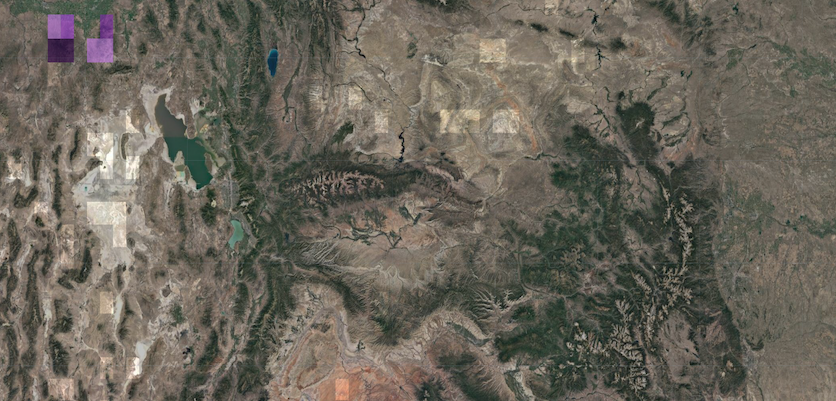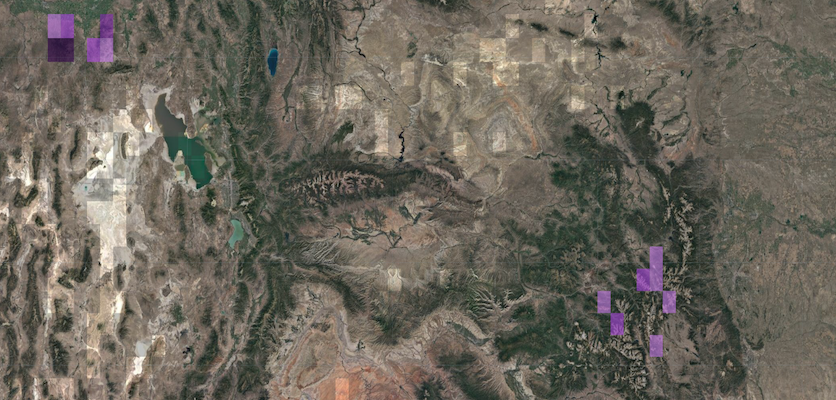As I noted in a guest blog for the Finch Research Network last fall, the story of Cassia Crossbills in Colorado is complicated by the fact that I belatedly discovered a recording of Cassia that I had made in Silverthorne, Colorado in March of 2012, pushing the first known occurrence of the species in Colorado back by nine years.
What does that mean, exactly? Heck if I know. But I do think it's another great reason why EVERY birder's first instinct upon hearing crossbills -- anywhere, anytime -- should be to pull out the phone and hit record.
Nathan Pieplow
Boulder
On Mon, Jun 19, 2023 at 4:08 PM David Lawrance <david.lawrance@gmail.com> wrote:
Nearly Half of the Cassia Crossbill's Population Could Be Lost After Wildfire is a 2020 Audubon article about the Badger wildfire in the South Hills in the fall of 2020. Christian Nunes reported the first report of 3 birds in Colorado in Grand County not much later in July 2021. Not that any conclusions can be drawn from just that, it does suggest a reason to locate to new lodgepole-rich areas. That cassia crossbills never needed to migrate doesn't mean that they are incapable of it.David LawranceLongmont CO--On Sunday, June 18, 2023 at 4:36:39 PM UTC-6 Ted Floyd wrote:Hey, all.
Motivated by Diana Beatty's COBirds inquiry from earlier today, I quickly generated a few eBird range maps. Check it out:
eBird records for Cassia crossbill, 1900–2020.eBird records for Cassia crossbill, 2021–2023.
Zooming out to show the entire Lower 48:eBird records for Cassia crossbill, 1900–2020.
eBird records for Cassia crossbill, 2021–2023.
It isn't too much of an exaggeration to say that much of what we "knew" about the Cassia crossbill has been thrown out the window. The conventional wisdom not even five years ago was that the species is restricted to just two mountain ranges in Cassia and Twin Falls cos., sc. Idaho. But now we understand that the Cassia crossbill occupies a larger swath of the southern Rockies in c. Colo., encompassing at least Eagle, Pitkin, Park, Summit, and Grand cos.
What is it that sc. Idaho and c. Colo. have in common? Answer: lots of lodgepole pine and almost no ponderosa pine. Cassia crossbills love lodgepole pine. So far, so good. But you knew it wasn't going to be so easy. Because what is it that *distinguishes* the mountains of sc. Idaho from those of c. Colo.? Well, squirrels are absent from sc. Idaho's mountains, yet prolific in the mountains of c. Colo.; good luck finding a U.S. Forest Service road or campground in c. Colo. and *not* finding buttloads of southwestern pine squirrels. (ICYMI: recent split, now Tamiasciurus fremonti.) You can probably see where I'm going with this: The specific epithet, viz., sinesciurus, of the Cassia crossbill means "without squirrels" because our understanding of the evolutionary ecology of the species critically depends on there being a landscape without squirrels. But that interpretation tidily defenestrates in squirrel-infested c. Colo.
I threw in a tease about ponderosa pine. Cassia crossbills don't seem to care about ponderosa pines, but Colorado's widespread red crossbills, the type 2, or, ahem, "ponderosa pine," red crossbills, supposedly do. And type 2 red crossbills are the numerically dominant crossbills in the mountains of c. Colo., cheerfully chowing down on lodgepole seeds, spruce seeds, fir seeds, Douglas-fir seeds, Walmart™ and PerkyPet® seeds, and even CDOT-proffered potash and magnesium chloride along state highways in the region. But not ponderosa seeds because they're not even there. (Okay, slight hyperbole. They're in people's yards in some places and, sparsely, planted around resorts. Pondos in condos, lol. And a very few in the nominal "wild." But ponderosa pines are, practically speaking at an ecological level, absent there.)
All of the preceding is a gratifying case study for the power of eBird to advance and even substantially revise our understanding of bird biology. All it takes is a modicum of care and discipline. Note: not necessarily skill and experience; those are "nice to have," "icing on the cake." The biggies for field ornithology are care and discipline. What's so great about eBird here in Colo. is that records of Cassia crossbills, as well as records of red crossbills at the level of the "type," now *require* audio with diagnostic spectrograms. The word "diagnostic" needn't be scary. Here's a pair of barely audible type 2 (ponderosa pine) red crossbills that I recorded as they were receding fast in the drizzle high above the, er, lodgepole pine forests of c. Gilpin Co. a couple days ago:
https://macaulaylibrary.org/asset/585935691
It's really a piece-o'-crap recording. Don't bother trying to hear it. That said, the spectrogram of the flight call, strongly descending with a kink, or crook, around 4 kHz, is completely diagnostic for type 2. As Donna Dittmann once said, "If I can do this [use technology], anybody can do this." Well, the only birder more tech-averse than Donna is Yours Truly.
A whole lot of us will be in c. Colo. in just about a month for the joint meeting of Colorado Field Ornithologists (CFO) and Western Field Ornithologists (WFO). Literally hundreds of birders will be within earshot of crossbills almost continually. At the very least, we'll all be hearing type 2 red crossbills. Type 5 red crossbills should be up there, too, and perhaps type 3 and type 4 red crossbills, as well. Especially where there are spruces near timberline, white-winged crossbills absolutely should be looked for. And if the summer of 2023 proves to be anything like the summers of 2021 and 2022, then we can be hopeful for encounters with Cassia crossbills.
BUT...
AND...
We need to document it all. Photos and especially videos of crossbills feeding are exceedingly valuable. And what we're really after is as much audio documentation as possible of flight calls. Cellphones are eminently up to the task; just press the red button, it's that easy. Also, you can extract audio from video made with even the most basic of digital cameras. Best of all, you don't even need to know what you got. If you're not certain (Floyd raises his hand, half the time he's out there...), just upload your media as "Red Crossbill" or "Red/Cassia Crossbill" or "crossbill sp."—those are all valid eBird "taxa," and it is an excellent idea to use them when you're not sure—and an eBird reviewer or other expert will swoop in and help you with the ID.
In a little more than a month, we may know a lot more about crossbill biology than we do right now. How cool is that! I hope somebody writes up the analysis for CFO's journal Colorado Birds and for WFO's journal Western Birds. Just take pictures, make videos, and record audio. Lots of it. And, not to go all Leatherman on you, but try to ascertain what the crossbills are eating.
We can do this!
Ted Floyd
Lafayette, Boulder Co.
--
You received this message because you are subscribed to the Google
Groups "Colorado Birds" group.
To post to this group, send email to cobirds@googlegroups.com
For more options, visit this group at
http://groups.google.com/group/cobirds?hl=en?hl=en
* All posts should be signed with the poster's full name and city. Include bird species and location in the subject line when appropriate
* Join Colorado Field Ornithologists https://cobirds.org/CFO/Membership/
---
You received this message because you are subscribed to the Google Groups "Colorado Birds" group.
To unsubscribe from this group and stop receiving emails from it, send an email to cobirds+unsubscribe@googlegroups.com.
To view this discussion on the web visit https://groups.google.com/d/msgid/cobirds/0f97abfe-732f-4b7d-8fe9-364c7b02202dn%40googlegroups.com.
--
You received this message because you are subscribed to the Google
Groups "Colorado Birds" group.
To post to this group, send email to cobirds@googlegroups.com
For more options, visit this group at
http://groups.google.com/group/cobirds?hl=en?hl=en
* All posts should be signed with the poster's full name and city. Include bird species and location in the subject line when appropriate
* Join Colorado Field Ornithologists https://cobirds.org/CFO/Membership/
---
You received this message because you are subscribed to the Google Groups "Colorado Birds" group.
To unsubscribe from this group and stop receiving emails from it, send an email to cobirds+unsubscribe@googlegroups.com.
To view this discussion on the web visit https://groups.google.com/d/msgid/cobirds/CAFhaDVLXCmraRvCJN%3DG%3DBnhs-ATHr%3Diz92SRM-KuowhF4iHb8w%40mail.gmail.com.




No comments:
Post a Comment